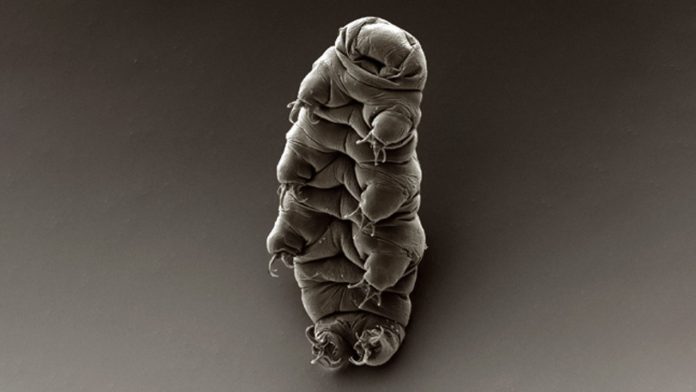There’s a controversial theory concerning the origins of life on Earth, which states that the first microbes to appear on the planet arrived as passengers on a meteorite. Known as panspermia, this hypothesis depends on the ability of tiny organisms to survive colossal impacts, which is why a team of researchers recently tested whether or not tardigrades can withstand being fired out of a gun at high velocity.
Also known as water bears, tardigrades are the perfect candidate for such an experiment, given that they are able to survive being boiled or frozen, and are unphased by cosmic radiation, low oxygen environments, high pressure, or even the vacuum of space. Whether or not they can avoid being splattered when crash-landing on a new planet, however, remains a burning question.
To provide an answer, scientists loaded small numbers of tardigrades into nylon bullets, which were frozen in order to induce the tiny critters into a hibernation state known as tun. Writing in the journal Astrobiology, the study authors explain how they fired their living munitions into a sand target at a range of speeds, before attempting to revive the tardigrades from their tun.
“This investigation tested whether tardigrades can survive in impacts typical of those that occur naturally in the Solar System,” they write. “We found that they can survive impacts up to 0.9 km [per second], which is equivalent to 1.14 GPa shock pressure, but cannot survive impacts above this.”
Though impressive, such a result is not good news for proponents of the panspermia premise, as space impacts generally exceed this level of shock pressure. As such, the authors conclude that “arrival of a tardigrade on Earth, for example by way of a meteorite impact, is not likely to be a viable means of a successful transfer even for such hardy organisms.”
However, the researchers don’t go as far as to rule out panspermia entirely, as they note that tiny organisms could potentially be transferred from the Earth to the Moon on materials that might be thrown into space following a collision between a meteorite and our planet. While the majority of the ejecta to reach the Moon would probably be traveling too fast for tardigrades to survive the journey, the study authors estimate that around 40 percent of this material could impact the Moon gently enough for some individuals to endure.
A similar outcome could occur as a result of impact ejecta from Mars reaching the planet’s moon Phobos, though the researchers say that the chances of survival are somewhat lower in this scenario.






























Can you pls recheck your math.. 0.9km per sec = 3240km/h [0.9x60x60] = 2013mph (not 200mph as per your heading)